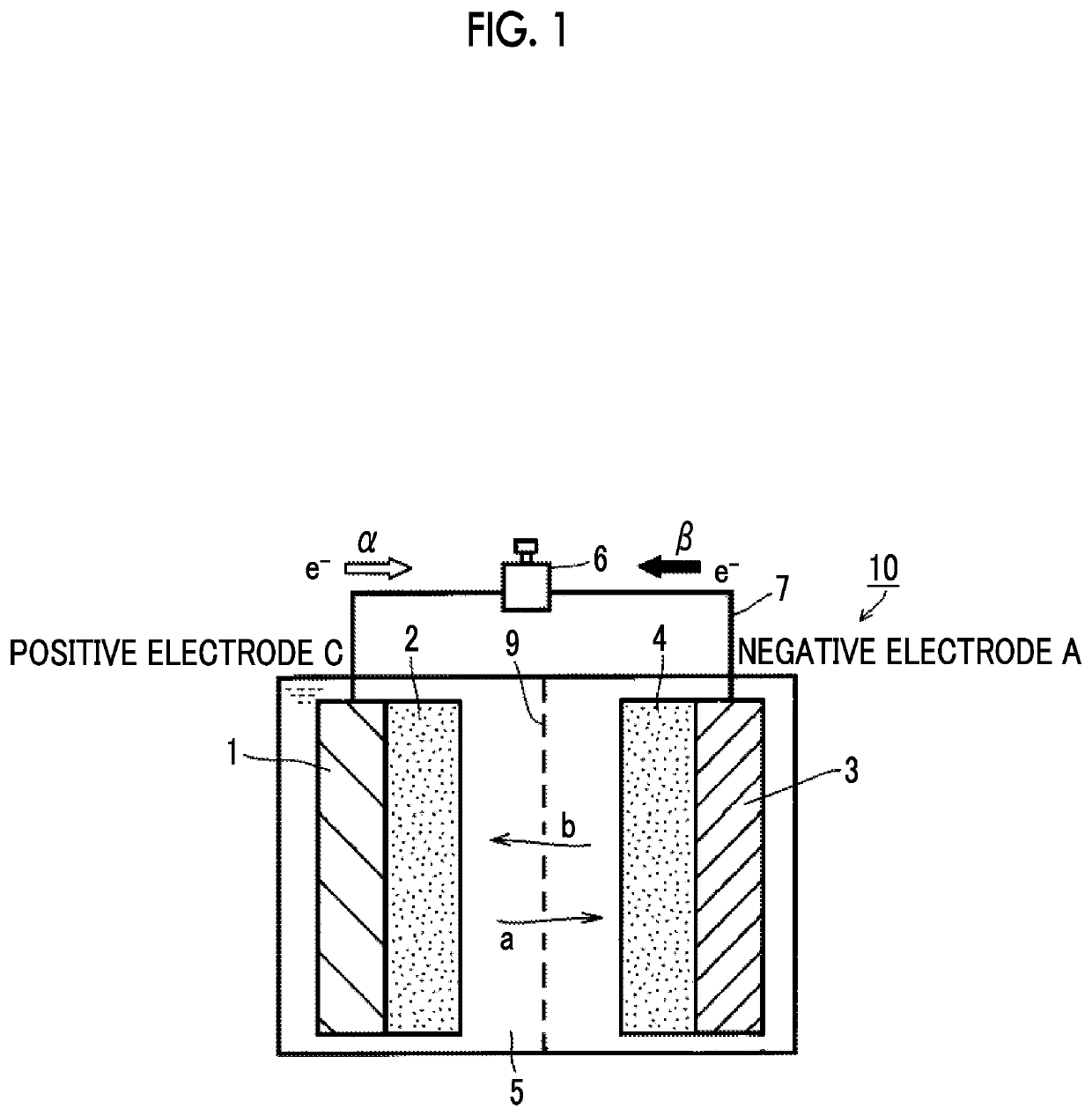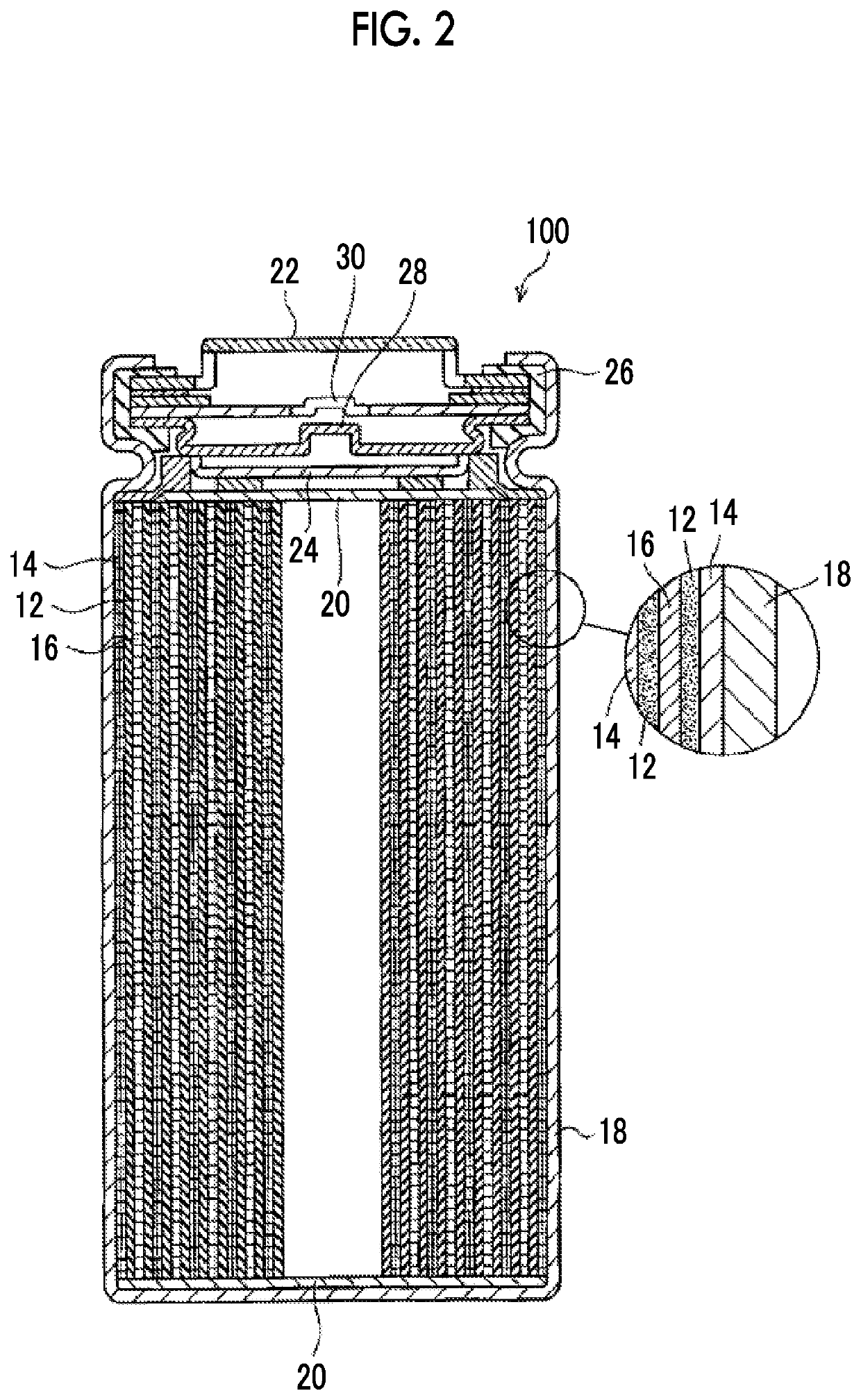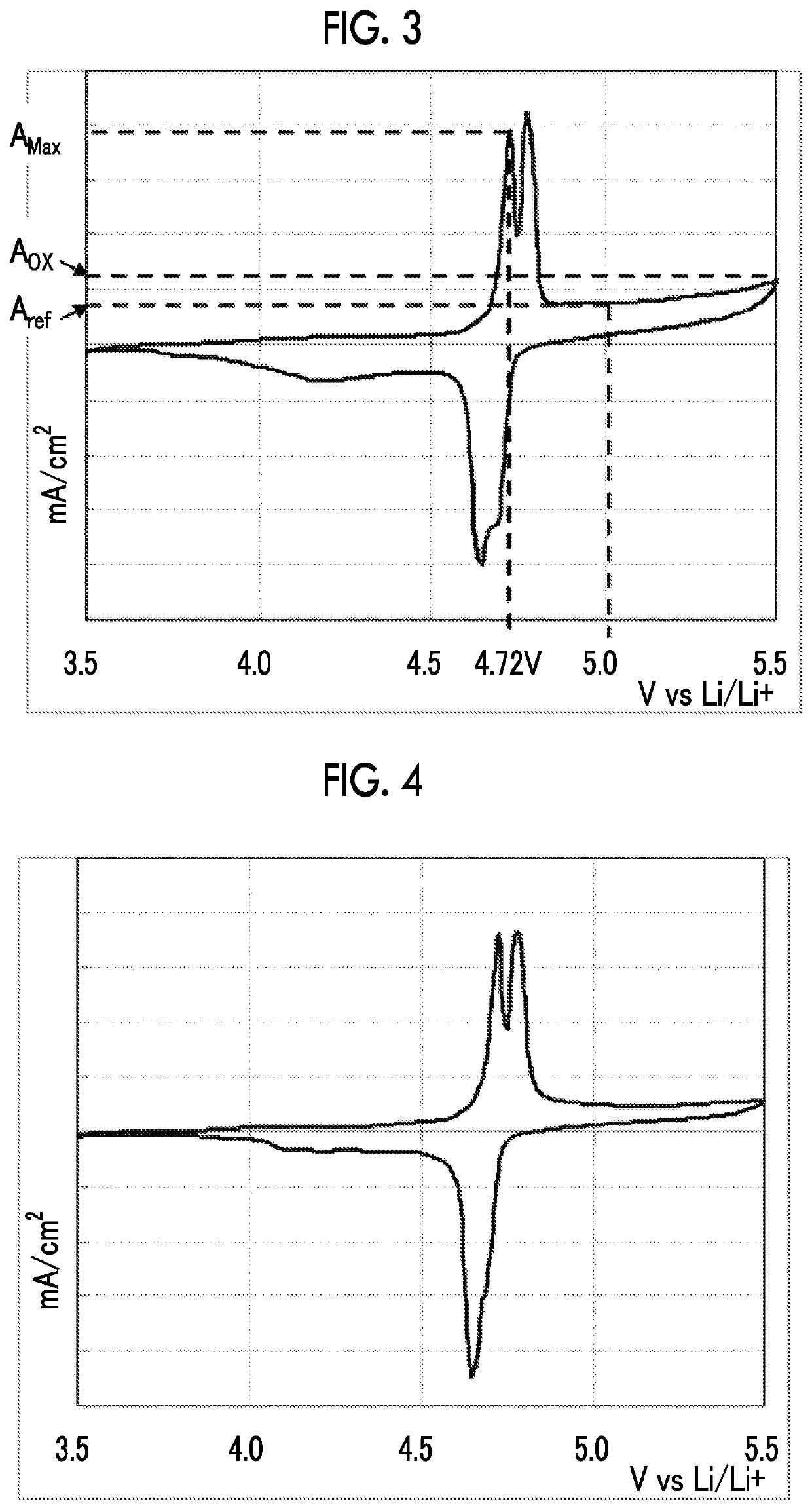Electrolytic solution for non-aqueous secondary battery and non-aqueous secondary battery
a technology of electrolytic solution and secondary battery, which is applied in the direction of electrochemical generators, electrical apparatus, organic electrolytes, etc., can solve the problem of not being able to form a sufficient positive electrode sei coating, and achieve the effect of suppressing the oxidation and decomposition of organic solvents and effectively suppressing the deterioration of electrolytic solutions
- Summary
- Abstract
- Description
- Claims
- Application Information
AI Technical Summary
Benefits of technology
Problems solved by technology
Method used
Image
Examples
example 1
[0224](Synthesis Examples of Compound Represented by any of General Formulae (I) to (III))
[0225](1) Synthesis of Exemplary Compound A-1
[0226]The above-described exemplary compound A-1 was synthesized using the method described in Journal of Organometallic Chemistry (published in 1993, Volume 456, pp. 205 to 212).
[0227](2) Syntheses of Exemplary Compounds A-2 to 11 and Compounds AR-1 and 2
[0228]The above-described exemplary compounds A-2 to 11 and compounds AR-1 and 2 described below were synthesized in the same manner as the exemplary compound A-1.
[0229]The exemplary compounds A-1 to 11 are the compound represented by any of General Formulae (I) to (III), and the compounds AR-1 and 2 are compounds for comparison. Meanwhile, the exemplary compounds AR-1 and AR-2 respectively correspond to I-18 and I-25 of JP2014-029827A. Hereinafter, the exemplary compounds A-1 to 11 and the compounds AR-1 and 2 will be referred to as the additives.
[0230]In the following formulae, TMS represents trim...
example 2
[0255]The amount of the electrolytic solution oxidized was evaluated in a case in which a positive electrode different from that in Example 1 was used in the electrolytic solution prepared in Example 1.
[0256]Specifically, POX [%] was computed in the same manner as in Example 1 except for the fact that lithium nickel manganate that was used as the positive electrode active material in Example 1 was changed to olivine-type lithium cobalt phosphate (LiCoPO4).
[0257]For the obtained amount of the electrolytic solution oxidized, a relative value in the case of considering the amount of the electrolytic solution oxidized (POX [%]) of C11 as 100 was obtained and evaluated using the following standards. The obtained results are shown in Table 2.
[0258]—Evaluation Standards—
[0259]A: 0 or more and less than 30
[0260]B: 30 or more and less than 60
[0261]C: 60 or more and less than 80
[0262]D: 80 or more and 100 or less
[0263]
TABLE 2Electrolytic solutionNo.AdditiveAmount of electrolytic solution oxid...
PUM
| Property | Measurement | Unit |
|---|---|---|
| viscosity | aaaaa | aaaaa |
| viscosity | aaaaa | aaaaa |
| temperature | aaaaa | aaaaa |
Abstract
Description
Claims
Application Information
 Login to View More
Login to View More - R&D
- Intellectual Property
- Life Sciences
- Materials
- Tech Scout
- Unparalleled Data Quality
- Higher Quality Content
- 60% Fewer Hallucinations
Browse by: Latest US Patents, China's latest patents, Technical Efficacy Thesaurus, Application Domain, Technology Topic, Popular Technical Reports.
© 2025 PatSnap. All rights reserved.Legal|Privacy policy|Modern Slavery Act Transparency Statement|Sitemap|About US| Contact US: help@patsnap.com



